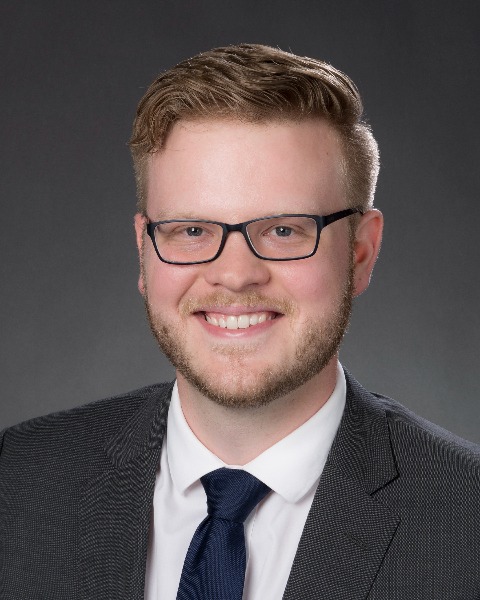Back
Poster, Podium & Video Sessions
MP01: Benign Prostatic Hyperplasia: Surgical Therapy & New Technology I
MP01-20: A randomized controlled trial for opioid-limiting pain control after transurethral resection of the prostate: multimodal pain regimen with educational intervention versus standard of care
Friday, May 13, 2022
7:00 AM – 8:15 AM
Location: Room 228
Adam Daily*, Seattle, WA, Ryan Donahue, San Antonio, TX, Andrew Stamm, Silverdale, WA, Paul Kozlowski, Christopher Porter, Fred Govier, Nicholas Cowan, Alvaro Lucioni, Christian Kuhr, Kathleen Kobashi, Seattle, WA, Neil Hanson, Minneapolis, MN, John Corman, Una Lee, Seattle, WA

Adam M. Daily, MD, MS
Virginia Mason Franciscan Health
Poster Presenter(s)
Introduction: Use of opioids and opioid-involved deaths led the Centers for Disease Control to declare an epidemic in 2011. The literature on opioid reduction in urology is limited but growing. The objective of this study was to assess whether a multimodal opioid-limiting protocol and patient education intervention can reduce postoperative opioid use following transurethral resection of the prostate (TURP).
Methods: This prospective, non-blinded, randomized controlled trial (NCT04102566) assigned 50 patients undergoing a TURP to either a standard of care control or multimodal experimental group. Patients had a bipolar or monopolar energy TURP performed by one of ten urologic surgeons. The experimental intervention included adding ibuprofen to the postoperative pain regimen, promoting appropriate use of opioids while hospitalized, an educational intervention, and discharging without opioid prescription. Data regarding demographics, operative data, opioid use, pain scores, and patient satisfaction was compared between groups.
Results: A total of 47 patients were included, n=24 (control) and n=23 (multimodal). Demographic and operative findings were similar between groups. Statistical analysis for noninferiority demonstrated non-inferior inpatient pain control in the multimodal group (mean pain score 2.5 vs. 2.4, p = 0.0003). The multimodal group used significantly fewer morphine milligram equivalents than the control group after discharge (0 vs 4.1, p = 0.04). Inpatient use was reduced but did not reach statistical significance (6.0 vs 9.8, p = 0.2). Mean satisfaction score with pain control was similar between groups (9.6 vs 9.2, p = 0.32). No opioid prescriptions were requested by multimodal patients after discharge. Adverse events and medication side effects were infrequent and similar with the exception of fewer bowel movements within 48 hours in the multimodal group.
Conclusions: A multimodal postoperative pain protocol utilizing ibuprofen combined with patient education resulted in significantly reduced opioid use and prescriptions. Patients remained satisfied with their pain control with no increase in adverse events. This high level data provides evidence that discharge after TURP without opioids is feasible and does not compromise quality of care. Eliminating opioid prescriptions following a common urologic procedure will decrease risk of opioid-related adverse events and have a positive downstream impact.
Source of Funding: None
Methods: This prospective, non-blinded, randomized controlled trial (NCT04102566) assigned 50 patients undergoing a TURP to either a standard of care control or multimodal experimental group. Patients had a bipolar or monopolar energy TURP performed by one of ten urologic surgeons. The experimental intervention included adding ibuprofen to the postoperative pain regimen, promoting appropriate use of opioids while hospitalized, an educational intervention, and discharging without opioid prescription. Data regarding demographics, operative data, opioid use, pain scores, and patient satisfaction was compared between groups.
Results: A total of 47 patients were included, n=24 (control) and n=23 (multimodal). Demographic and operative findings were similar between groups. Statistical analysis for noninferiority demonstrated non-inferior inpatient pain control in the multimodal group (mean pain score 2.5 vs. 2.4, p = 0.0003). The multimodal group used significantly fewer morphine milligram equivalents than the control group after discharge (0 vs 4.1, p = 0.04). Inpatient use was reduced but did not reach statistical significance (6.0 vs 9.8, p = 0.2). Mean satisfaction score with pain control was similar between groups (9.6 vs 9.2, p = 0.32). No opioid prescriptions were requested by multimodal patients after discharge. Adverse events and medication side effects were infrequent and similar with the exception of fewer bowel movements within 48 hours in the multimodal group.
Conclusions: A multimodal postoperative pain protocol utilizing ibuprofen combined with patient education resulted in significantly reduced opioid use and prescriptions. Patients remained satisfied with their pain control with no increase in adverse events. This high level data provides evidence that discharge after TURP without opioids is feasible and does not compromise quality of care. Eliminating opioid prescriptions following a common urologic procedure will decrease risk of opioid-related adverse events and have a positive downstream impact.
Source of Funding: None

.jpg)
.jpg)